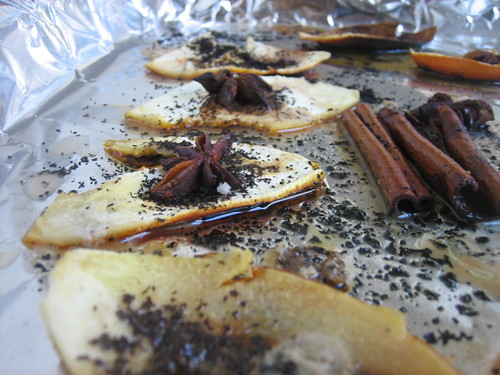As soon as we landed in Managua, we were picked up by Victor and driven about thirty minutes to Granada, the oldest city in Central America and yet the most developed destination in Nicaragua. Our home for three nights was Hospedaje La Siesta on Calle El Almendro, a modest room with private bath for $15 a night owned by a French-Nicaraguan couple awaiting their first child. It was the middle of the day when we checked in. It was hot, and since our flight out of New York was at 6am, we immediately fell asleep. We woke up just before the sun started to set and decided to walk to Parque Central to look for food.
Granada had a Oaxacan feel to it. Old buildings repainted in vibrant colors; beat-up sedans co-exist with horse carriages on cobble stone streets. The locals congregated in the park enjoying the warm early night breeze, while street vendors packed up their wares, as if thinking, Tomorrow is another day.

We ended up eating at Señora Olga’s for dinner. It wasn’t a restaurant but a woman grilling chicken on the corner of Avenida Bodan. We ate our plates of barbequed chicken with a mountain of tostones, fried raw plantains, and maduros, fried ripe plantains, with coleslaw (35 cordovas apiece or $2) on plastic tables and chairs. We heard the loud singing from the small church across the street. There were young boys playing football on the other side, screaming, while mangy dogs waited for our leftovers. The lights turned off–a blackout–and for a while, we ate in the dark. We ended up eating at Señora Olga’s a second time. To us, it was the best option in Granada, less we chose to eat pizza or pasta.
The next day, we woke up early to hike Volcán Mombacho. We passed by the central market in search of breakfast. We stopped by a stall that had a sign on it, Desayuno, Breakfast, and ordered a plate of the gallo pinto: rice, red beans and huevos rancheros, or scrambled eggs with tomatoes and onions. The big lady who ran the show was a bit disappointed that we didn’t touch the Jell-O-like tamal on our plates.
At Shell Palmira, our foreign-looking selves were guided to a souped-up school bus to Mombacho. The ride took only twenty minutes and the conductor told us when it was time for us to get off. From the highway, we walked about a mile until we reached the Biological Center. We paid our 100 cordovas ($5) to enter the Reserve. One of the uniformed rangers told us that we have to wait for two hours for the shuttle that will take us to the top of the volcano. It was only 8:30am so we decided to hike the almost-vertical concrete path ourselves. Well, the 3,000-feet hike up took us two hours. At the top, we learned that there were two craters, Sendero el Cráter and Sendero la Puma. We were so exhausted from our hike, we only had strength left for the 25-minute walk around Sendero el Cráter and not the estimated 3-hour Puma. Volcán Mombacho is now practically a forest; privately-owned coffee plantations and cattle ranchers cover the rest of the land. From the lookout points, we could see Lake Cocibolca, Nicaragua’s largest lake, and Las Isletas, the islets believed to have come from the last major eruption.

On our way down, I convinced the Dr. to zipline. We’ve never done a canopy tour before, so we gave up $50 to belay and zip to fifteen platforms and give ourselves a thrill by doing “the Superman” and “the upside-down.” The entire course runs 1,500 meters and there was even a hanging (and shaky) rope bridge to cross from one of the platforms. We rappeled from a large ceiba tree 23 meters down to one of the farms to finish. It was beautiful up there. We could see the lake from some of the platforms. The massive trees looked so alive with orchids and ferns growing from their branches. At the end of the course, our guides radioed the base camp and had us picked up. We were given a ride all the way down to the Biological Center, so all we had to do was walk the last 30 minutes to the highway to catch the bus back to Granada.

On our last day in Granada, we had breakfast at Nica Buffet, a Dutch-owned restaurant, where we had pancakes and, finally, good coffee. The owner recommended that we sign up with Hostal Oasis to visit Laguna de Apoyo for the day. For about $30, we joined a few other young couples and got on a van to go to Crater’s Edge, where we spent the entire day lazing by the lake. It was too hot to do anything; too hot to kayak, too hot to hike, even too hot to sunbathe. The swimming hole is 48 square-kilometers and it’s trapped inside the crater of Volcán Apoyo. It’s one of the cleanest and deepest (at about 650 feet) lagoons in the country. It got kind of boring after a few hours of sitting prettily. We finished our books under the shade and we were anxious to keep moving.
Back in town, we paid $1 each to go up the bell tower of La Merced Church and watch the sun set. We could see everything from up there. The courtyards and the roofs even reminded me of Prague; the church domes of Barcelona. We walked to the malecon and said our goodbyes to Granada as the sun went down like a red-orange yolk.
Where to stay in Granada, Nicaragua: Hospedaje La Siesta
Related post/s:
Granada, Nicaragua photos on Flickr
Volcan Mombacho photos on Flickr
Laguna de Apoyo photos on Flickr





